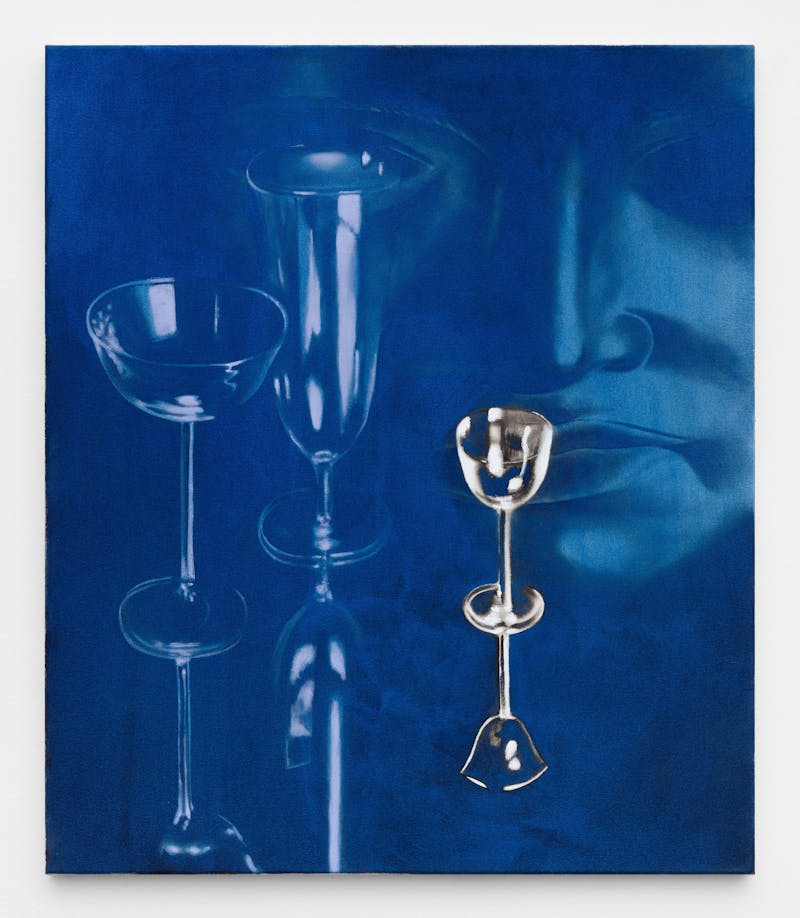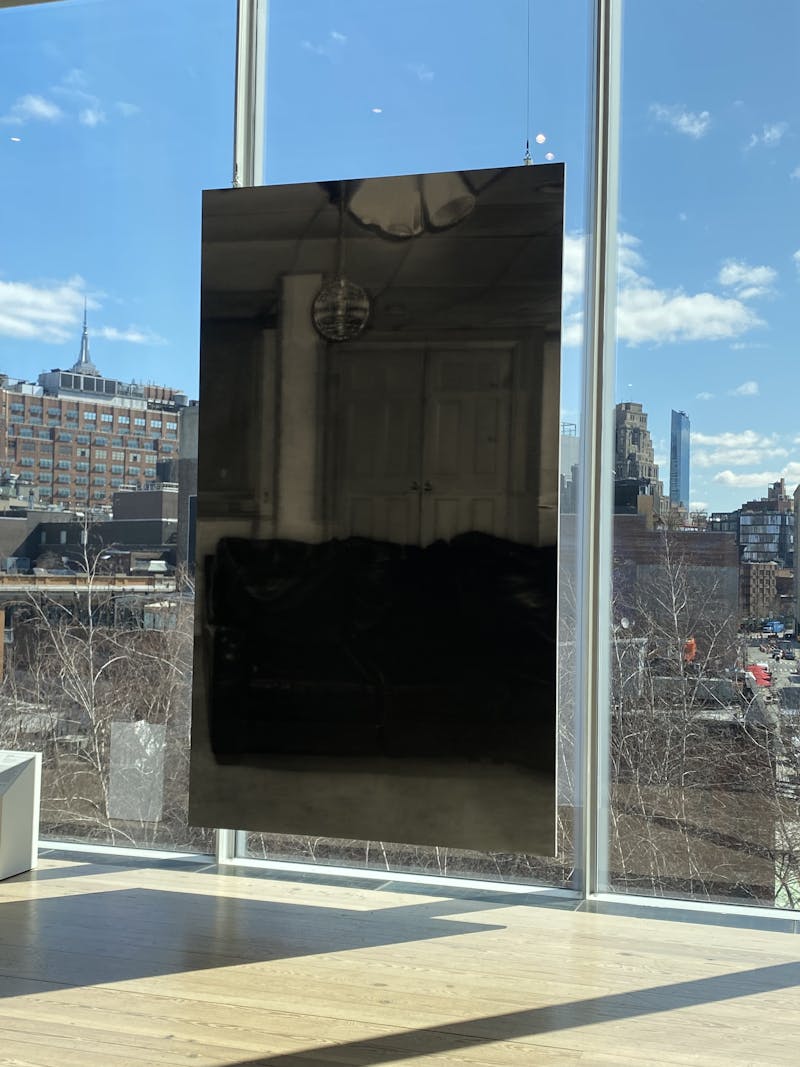Brought up in Vicenza, a small town close to Venice, Jacopo has seldom been short of surroundings to marvel at, taking the short walk from his family home to Villa Valmarana ai Nani and beaming up at the sprawling painted frescos by Giambattista and Giandomenico Tiepolo. Since moving to Brussels, his paintings have absorbed his early fascination for these ceaseless scenes, merging centuries and influences from Italy with thin veils of oil. In previous paintings, figures and artefacts traverse every inch of canvas, squabbling for attention, but for I’ll be your mirror he forces restraint, subtler gestures guiding our eyes to scrutinise absence and ghostly reflections as they flitter away.
Jacopo lives a stripped back life, preferring his surroundings sparse, shelves unadorned. He paints the things he doesn’t have instead, describing them as ‘hypnotic devices’ – unimportant as decoration but crucial obstacles for our eyes to meander around. They often relate to his upbringing in Italy: an elephant sculpted in Murano glass from Venice, or a decorative terracotta ashtray. These vessels often refract or deflect faces, the perspectives similar to paintings by Max Ernst or Salvador Dali where objects hover in front of surrealist vistas. Painting is like collage for Jacopo, casting his wide net of art, design or music influences to draw out contradictions. As a musician too (the title borrowed from a song by The Velvet Underground) he’s drawn to album covers that replicate art tropes or histories – Jacopo recognising model Jerry Hall’s look in Roxy Music’s album Siren as reminiscent of a figure from a 1730s Rococo painting. Her glittered face gleams too, an effect Jacopo often adopts to further brighten his subjects, seen similarly in singer Marc Almond’s almost iridescent make-up on the cover of A Lover Spurned.

Jacopo Pagin, I'll be your Mirror, 2022
The etherial faces that descend behind each painting are spared detail, the pronounced curves betraying his interest in Brancusi’s photographs of his sculptures, their carved faces similarly stripped back. The definite lines and swathes, too, recall Jacopo’s illustrative drawings, mostly made in thick graphite and charcoal. He’ll often ruminate on the assured strokes in Shen Zhou’s washy landscapes ι or Guido Balsamo Stella’s sketches on glass as inspiration, preferring immediacy to their considered mark-making. Jacopo works quickly, decidedly scaling up his chosen composition onto canvases that absorb his every painted move. Once started he rarely strays from or corrects his initial decision, using his brush like a pencil to sketch out his fantasies.
Layering scenes with a variety of pressures of brush, some applied with a deft touch, others heavier swathes, Jacopo leaves clues for us to enter: a winding staircase, or a sputtering candle, take centre stage, as the incongruous shadow of a figure barges in to reclaim our attention. When a contradiction arrises, Jacopo finds his flow, each painting revealing a plethora of anachronistic influences. The paintings often seem warped, as if reflected under the gentle ebb of water; perhaps a metaphor for his wavering ideas. He’ll often reflect on William Blake’s watercolours of similarly vibrant swirling scenes, λ only in I’ll be your mirror, Jacopo’s painted ingredients are chosen sparingly, carefully foregrounded by gradient panoramas. He jostles our expectation from each show to the next, here, taking us down a quieter path, where the ghosts that always lurked reappear under the spotlight, in all their glory.
